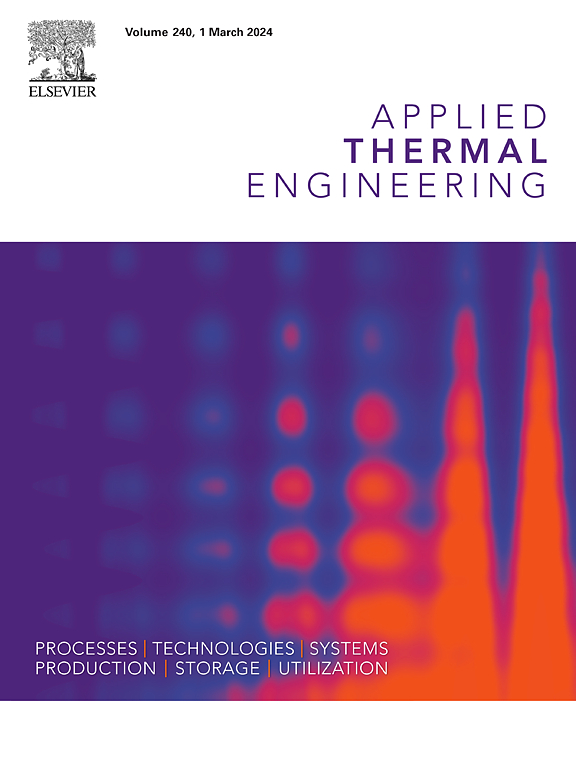Effect of crossflow on smooth and ribbed rectangular and curved channels during jet impingement
IF 6.1
2区 工程技术
Q2 ENERGY & FUELS
引用次数: 0
Abstract
The crossflow is a crucial impingement cooling phenomenon, and it has a complex impact on heat transfer. In practical scenarios, multi-jets and ribbed curved and ribbed rectangular channels are involved. Therefore, it is necessary to understand flow physics and heat transfer characteristics of multi-jet impingement of curved and rectangular channels under crossflow to optimize the cooling strategies in practical applications of gas turbine blade cooling, electronics cooling, and heat exchanger design. The present numerical study addresses this gap by analyzing three configurations: multi-jet impingement without crossflow, multi-jet impingement with crossflow, and multi-jet impingement with crossflow and ribs on rectangular and curved channels. A jet Reynolds number of 7500 and a blowing ratio of 0.25 were used in this study. The maximum stagnation Nusselt number values of rectangular and curved channels are decreased by 27 % and 49 %, respectively, with the introduction of crossflow. In contrast, it is observed that average Nusselt number values increase when crossflow and ribs are introduced in rectangular and curved channels. The jet deflection angles of ribbed curved channels’ first and second jets are 7 % and 14 % higher than those of ribbed rectangular channels with crossflow. The average Nusselt number is 17 % higher for the rectangular channel over the corresponding curved channel with an 11 % lower pumping power requirement.
求助全文
约1分钟内获得全文
求助全文
来源期刊

Applied Thermal Engineering
工程技术-工程:机械
CiteScore
11.30
自引率
15.60%
发文量
1474
审稿时长
57 days
期刊介绍:
Applied Thermal Engineering disseminates novel research related to the design, development and demonstration of components, devices, equipment, technologies and systems involving thermal processes for the production, storage, utilization and conservation of energy, with a focus on engineering application.
The journal publishes high-quality and high-impact Original Research Articles, Review Articles, Short Communications and Letters to the Editor on cutting-edge innovations in research, and recent advances or issues of interest to the thermal engineering community.
 求助内容:
求助内容: 应助结果提醒方式:
应助结果提醒方式:


